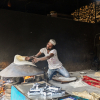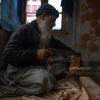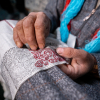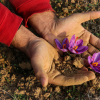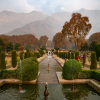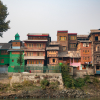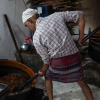Wazwan, Kashmir’s exclusive multi-course meat-based cuisine, has become an integral part of the region’s social and cultural fabric, taking centre stage at weddings and social gatherings. The tradition fosters community bonding as guests gather around a large copper plate (trami) to enjoy a meal. The custom concludes with guests receiving designated bags of leftovers, emphasising a tradition of sustainability and minimising waste.
Wazwan, introduced to Kashmir from Central Asia 600 years ago, evolved from a seven-dish meal into a multi-course feast featuring 12 to 24 dishes. Kashmir’s strategic position on the Silk Route, connecting China to Europe, brought diverse cultural and culinary influences, especially from Persia, Russia and Central Asia. The term wazwan derives from waza meaning ‘chef’ and wan meaning ‘shop’, though traditionally wazas set up temporary kitchens in host’s homes—a practice still prevalent during weddings in Kashmir. Though its origins trace back to Central Asia, this culinary tradition has flourished in Kashmir through centuries of innovation and artistic refinement. Unique to Kashmir, wazwan features distinctive dishes like rogan josh, gushtaba and yakhni. While historically reserved for weddings, wazwan is now served at various family functions, with the traditional version cooked by expert wazas.
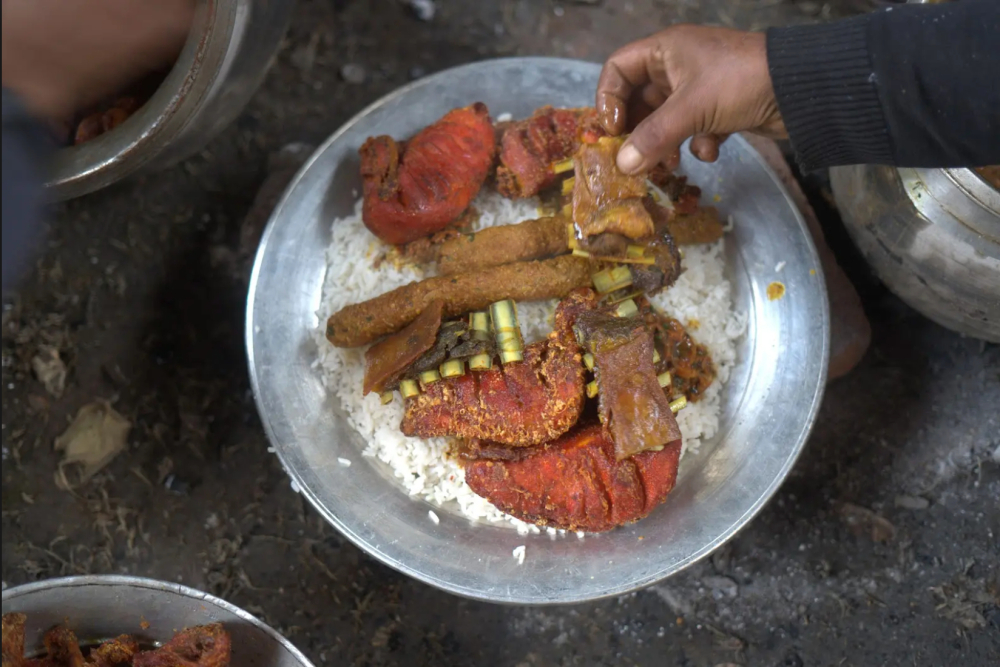
Trami. (Picture Credits: Syed Muneeb Masoodi)
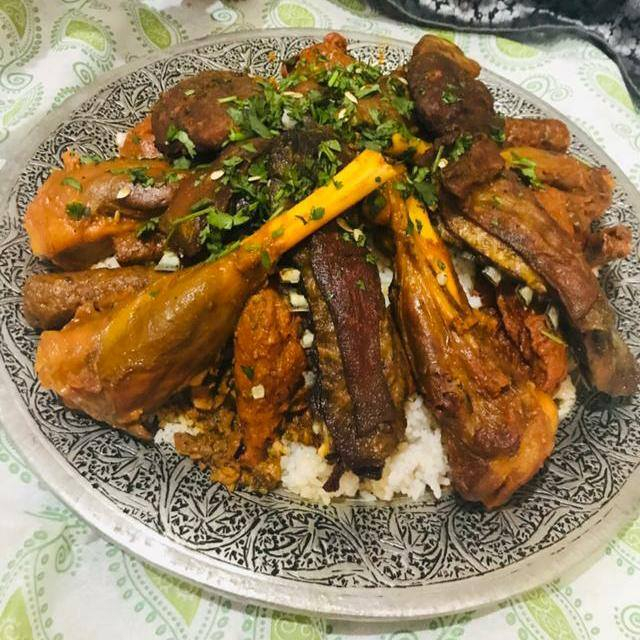
Wazwan. (Picture Credits: Wikimedia Commons)
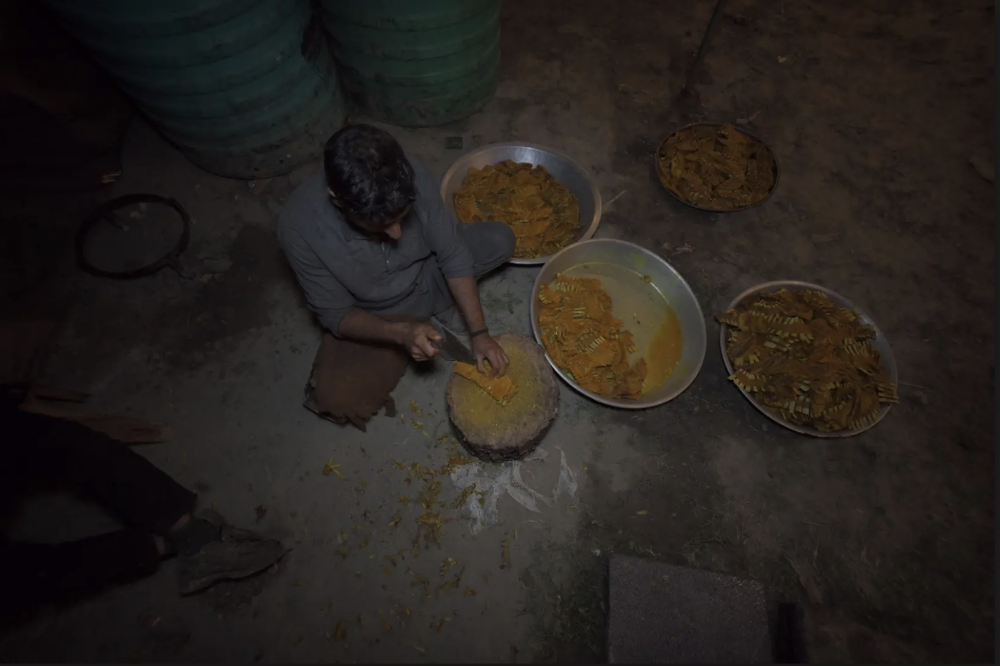
A waza cutting marinated meat with khont (wooden base) and kharu (knife). (Picture Credits: Syed Muneeb Masoodi)
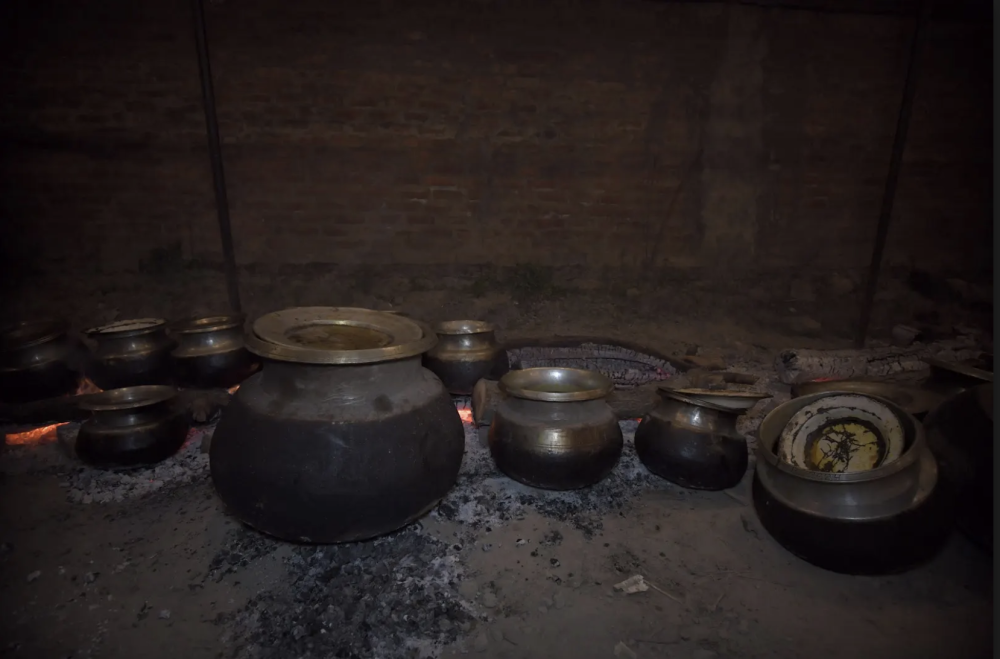
Wazwan being prepared in traditional daigs. (Picture Credits: Syed Muneeb Masoodi)
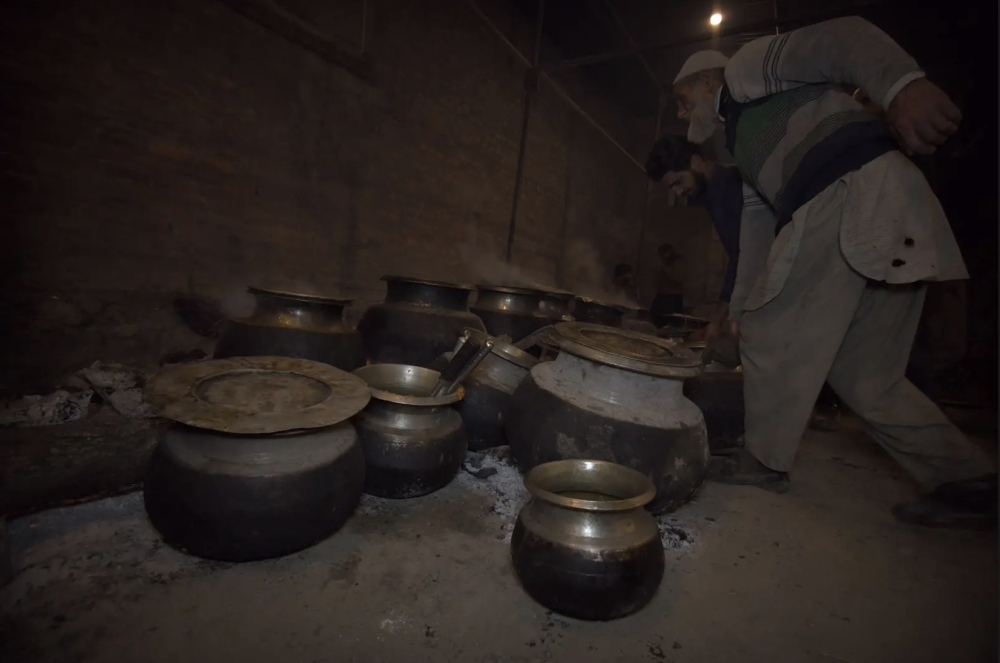
Wazwan being prepared in traditional daigs. (Picture Credits: Syed Muneeb Masoodi)
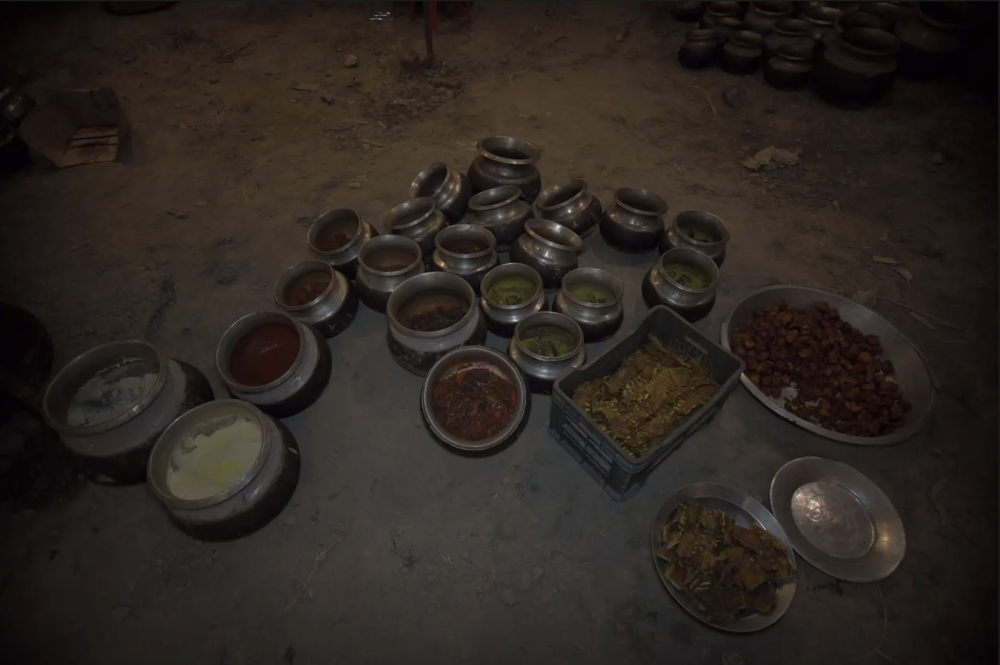
Wazwan prepared in traditional daigs. (Picture Credits: Syed Muneeb Masoodi)
Authentic wazwan is prepared in large copper cauldrons, called daigs, using dry wood from fruit trees like apple, walnut or plum, each known to impart its distinct flavour profile. Non-fruit trees like acacia and willow are occasionally used. Skilled wazas lead the process, working in teams based on the event size. A typical wedding, requiring 200-300 kilograms of meat, demands 3–4 wazas with their assistants. Larger celebrations processing 500-1,000 kilograms of meat necessitate proportionally larger teams. The head chef, known as wasta, oversees the preparation, from the slaughtering of the meat to the cooking. This skilled team of chefs meticulously cut and prepare the lamb meat, ensuring each piece is tailored for each specific dish. For instance, the fine, tender cuts reserved for gushtaba or rista differ from the robust pieces used for rogan josh or the fatty ribs required for tabakh maaz. This process involves not just cutting but an intricate understanding of the meat’s texture and suitability for various preparations, showcasing a level of expertise that far exceeds traditional butchery.
Signature Delicacies
Tabakh Maaz: Tabakh maaz is a popular starter in the wazwan feast. Fatty lamb ribs are simmered in a large daigh with a precise blend of water and spices like cardamom, cinnamon, ginger powder, garlic paste and cloves until tender. The ribs are then cut into rectangular pieces and fried in ghee to achieve a perfect balance: crispy, caramelised with a succulent interior. The skill of the waza shines through in this delicate balance, earning him particular praise when executed flawlessly.
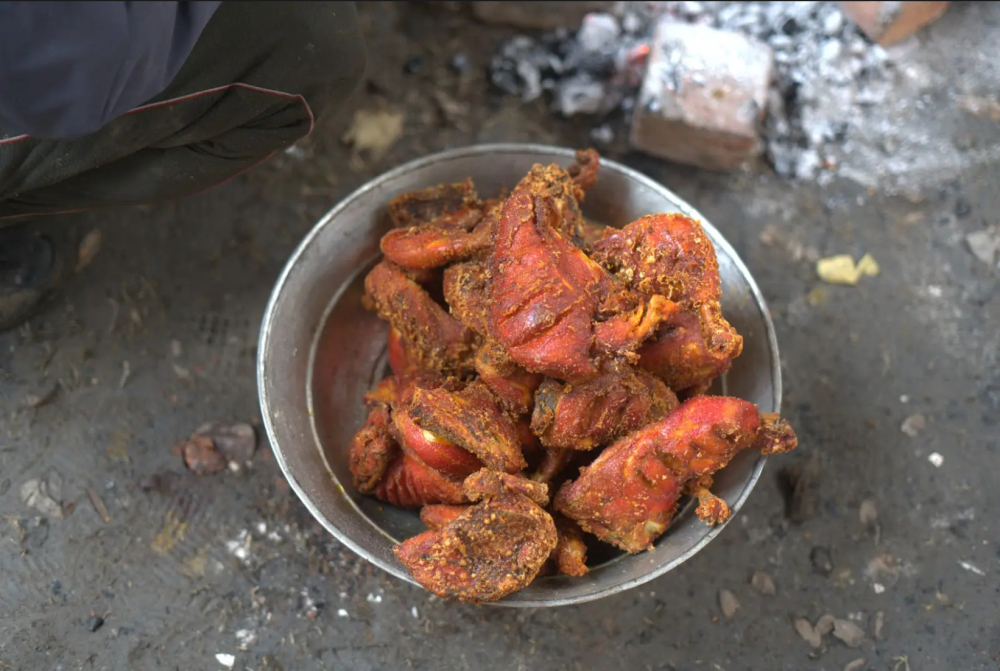
Tabak Maaz, tender, fried lamb ribs, seasoned with aromatic spices. (Picture Credits: Syed Muneeb Masoodi)
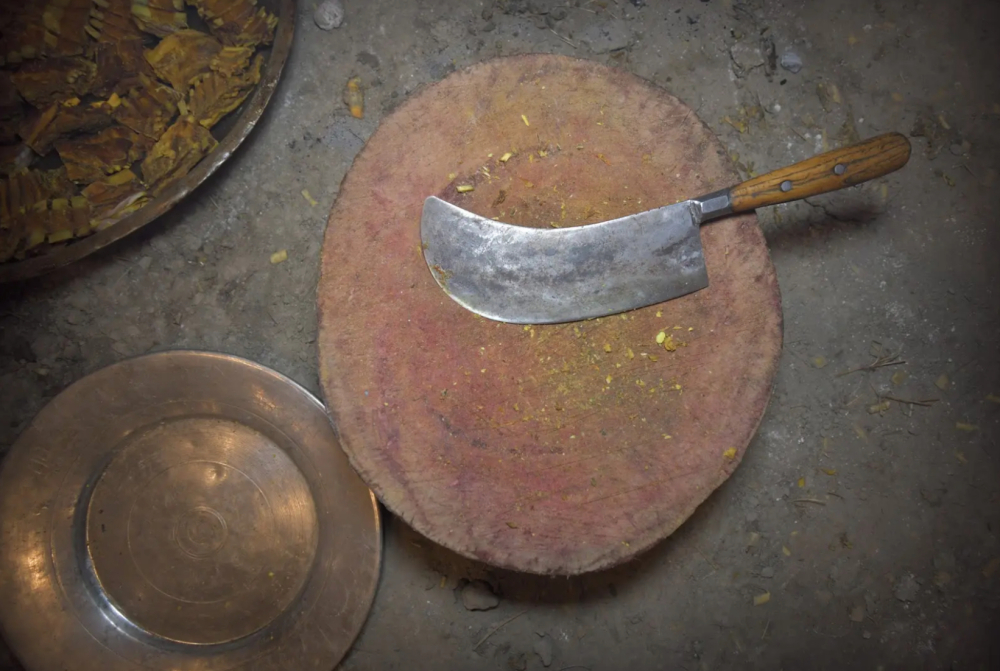
The khunti knife and wooden base, key tools in Kashmiri cuisine. (Picture Credits: Syed Muneeb Masoodi)
Rista: Rista meatballs, each usually weighing between 80 and 100 grams, nestles in spicy mutton gravy. Served with rice, the traditional presentation allocates one rista per person around the trami.
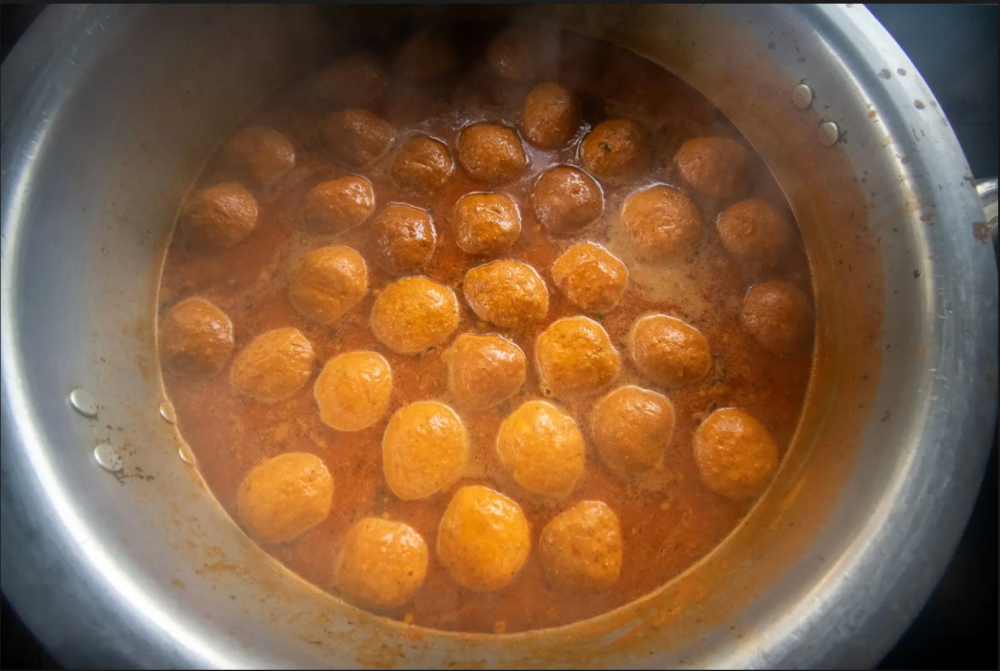
Rista. (Picture Credits: Syed Muneeb Masoodi)
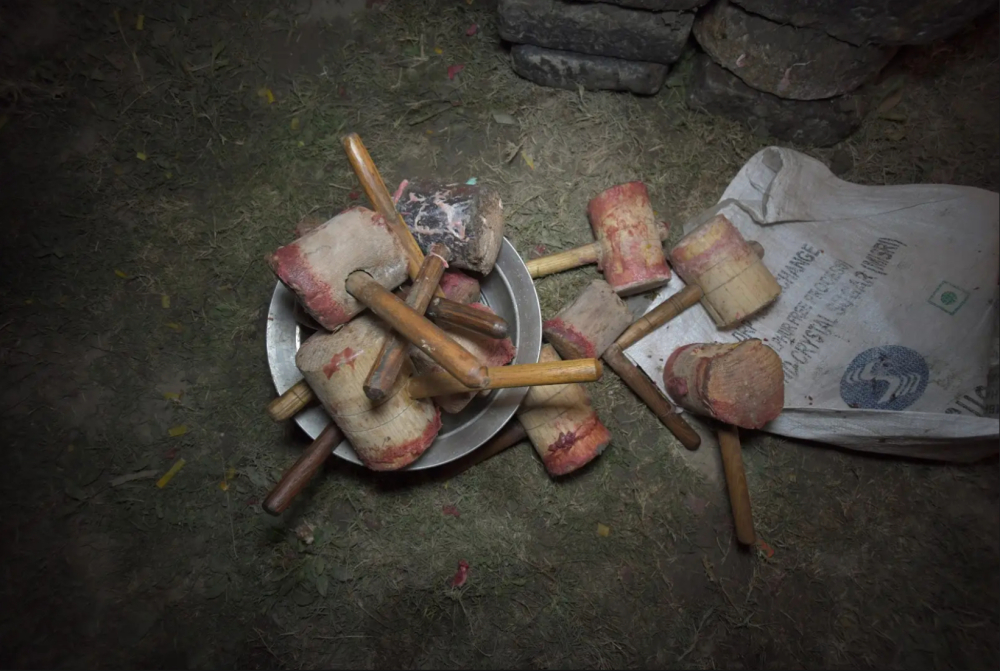
The wooden hammer used for pounding rista meatballs, ensures perfect texture and consistency. (Picture Credits: Syed Muneeb Masoodi)
Rogan Josh: This iconic dish made from specially selected mutton pieces, typically weighing 70 to 80 grams each, cut from the lower ribs, lower back (bukhtor), chest and neck. The meat is simmered in a rich gravy perfumed with garlic, ginger, red chili powder, clove, cardamom, cinnamon and pran (shallots) paste. After braising, it is left to simmer on medium heat and served hot with rice.
Aab Gosht: Aab gosht is made with meat from the lamb’s tail, shoulder or shank. The mutton is boiled until tender and then cooked with shallot, garlic paste, ginger powder, fennel powder, cloves, green and black cardamom, cinnamon and salt. Full-cream dry milk is added to the stock to create a rich, creamy soup, enhanced further with ghee for extra flavour. A generous serving of aab gosht, with its creamy soup, is traditionally served on the trami with rice.
Yakhni with Gushtaba: A wazwan preparation begins with the lamb slowly simmered in salted water, creating a broth that serves as the base for all dishes. For specialities like gushtaba and rista, raw lamb is minced directly after slaughter using a wooden hammer on a flat stone. Fresh sheep fat is added until the mixture turns light pink, followed by black cardamom seeds and salt. The mixture is then shaped into meatballs. Gushtaba meatballs are larger, while rista meatballs are smaller. These are boiled in hot water until soft and expanded. Gushtaba is cooked in yakhni, a thick gravy made from yogurt, mutton broth, shallots, ginger, garlic paste, and spices like cinnamon and cardamom. The result is a creamy white soup, topped with cumin and dry mint powder. A single gushtaba, weighing 200-400 grams, serves four people. The final course in a wazwan, it embodies the feast’s communal spirit as the eldest diner portions it among the group.
Vegetarian Dishes: Kashmir’s vegetarian cuisine, though often overshadowed by the meat preparations, holds its special place in traditional households. Two vegetarian dishes worth mentioning are: tamatar chaman (tomatoes and paneer) and mushrooms. For tamatar chaman, paneer pieces are boiled in turmeric water, fried in mustard oil and served with a rich gravy made from tomatoes, fennel, red chili, shallots and dry ginger. In another dish, button mushrooms are boiled and cooked in a gravy of onions, shallots and curd. For special occasions, exotic guchi mushrooms (morels) are prepared in a luxurious milk and cream-based gravy, adding a touch of elegance to the feast.
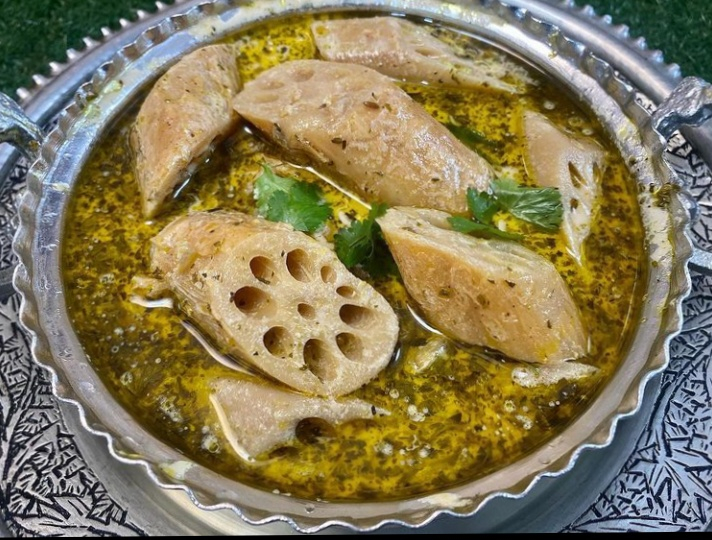
Nadru yakhni. (Picture Credits: Wikimedia Commons)
Another delicacy is nadru (lotus stem), which is a staple in Kashmiri households. It is commonly prepared in various ways, such as nadru yakhni, where the lotus stem is cooked in a delicate yogurt-based gravy infused with aromatic spices, or nadur monje, crispy deep-fried lotus stem fritters enjoyed as a snack. The earthy texture of the lotus stem makes it a unique and cherished ingredient in Kashmiri cuisine.
Kahwa: The golden-hued kahwa is a warm conclusion to a Kashmiri feast. It is made by boiling green tea, cinnamon, cardamom, saffron and sometimes rose petals, and usually sweetened with sugar, honey or topped with crushed almonds.
The Secret Flavour of Wazwan
Pran (shallot) distinguishes wazwan from its Mughlai counterparts in Delhi, Lucknow, Hyderabad, and beyond, where ginger, garlic, black pepper and cloves dominate. A member of the onion family (Allium cepa), pran was classified as a separate species (Allium ascalonicum) until 2010. Grown in Kashmir, it is particularly prized during the wedding season, with prices ranging from 500 to 1,000 rupees per kilogram. Making pran paste is a labour-intensive process: women clean and chop the strong-smelling bulbs, which are then fried in large quantities by wazas and then ground into a paste. For every 100 kilograms of wazwan, 7 to 10 kilograms of pran paste is needed.
Wazpur Srinagar and the New Generation of Wazas
Srinagar’s Wazpur district has long housed the city’s finest traditional wazwan chefs, preserving this culinary legacy through generations. But the newer generation of wazas is increasingly turning away from the profession due to its demanding nature, requiring up to 18 to 20 hours a day during the wedding season, constant exposure to smoke and heat and sleepless nights, which inevitably impacts health.
Fayaz Ahmad, a renowned chef from Wazpur, shares, ‘The new generation is not willing to continue this work, as it requires immense patience and perseverance. We work with fire, smoke, and heavy copper daigs, starting at dawn and often working well past midnight. During the wedding season, from May to October, we stay away from home for days at a stretch with little sleep. The current generation is not ready for such challenges. Interestingly, those who once worked as helpers and came from remote areas of Kashmir are now leading the profession. Wazpur is slowly losing its charm.’
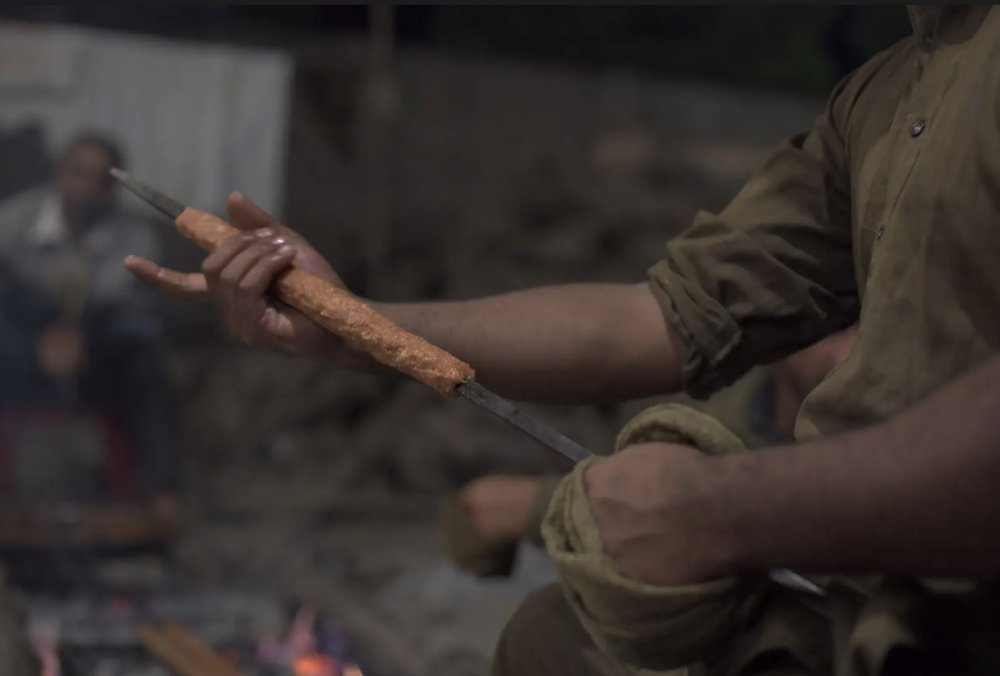
A waza expertly shaping seekh kebab on a skewer. (Picture Credits: Syed Muneeb Masoodi)
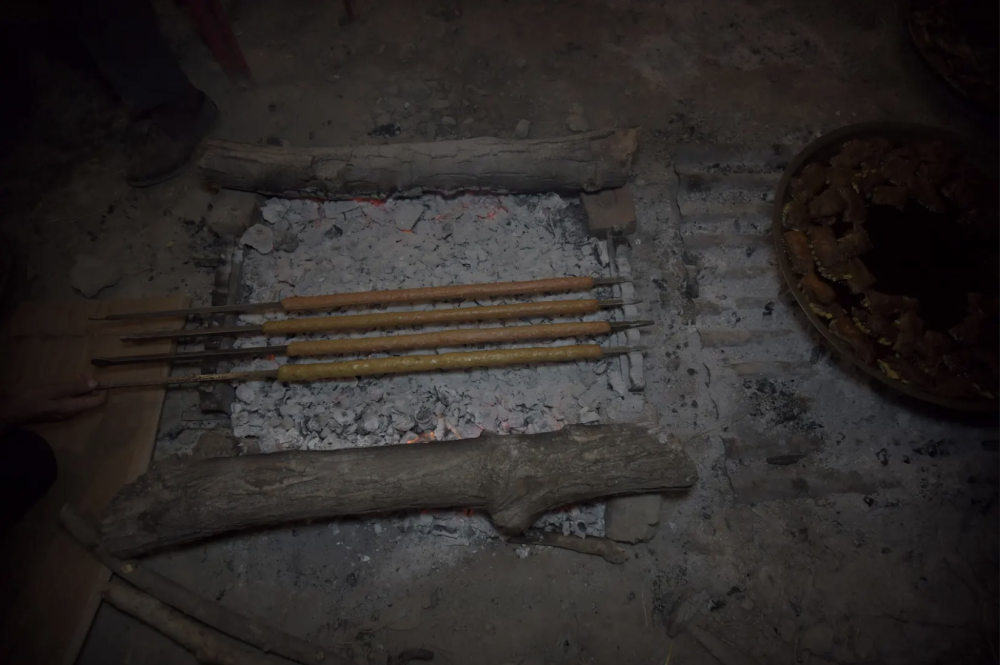
Seekh kebabs being grilled over charcoal. (Picture Credits: Syed Muneeb Masoodi)
Jahangir Ahmad, 29, is a second-generation waza. His father, Ghulam Hassan, 60, has worked in the profession for 35 years. Originally from the village of Kralcheck in Chadoora, central Kashmir’s Budgam district, Ghulam Hassan moved to Srinagar to train under senior waza Farooq Ahmad, who learned the art of wazwan in Srinagar’s Wazpur area. Jahangir and his father are in high demand in rural Chadoora, where they lead a team of 10 to 15 workers. ‘From May to November, we are always busy with work. Our workers are seasonal and are paid based on their skills. Some wash the large daigs, some prepare rice, and others mince the meat for gushtaba, rista and seekh kababs. My father oversees the work while I, along with two other chefs, cook the dishes. Even beginners earn 700 rupees per day, while trained wazas can earn 2,000 to 3,000 rupees per day,’ shares Jahangir Ahmad.
Conclusion
Wazwan is deeply embedded in Kashmir’s cultural identity. Preserved through centuries, it remains a cornerstone of Kashmiri heritage. In an age where culinary practices are rapidly changing across the world, wazwan stands out as one of the few traditional cuisines still prepared and served in the old way. This living tradition, thus, deserves protection for future generations.
This essay has been created as part of Sahapedia's My City My Heritage project, supported by the InterGlobe Foundation (IGF).



